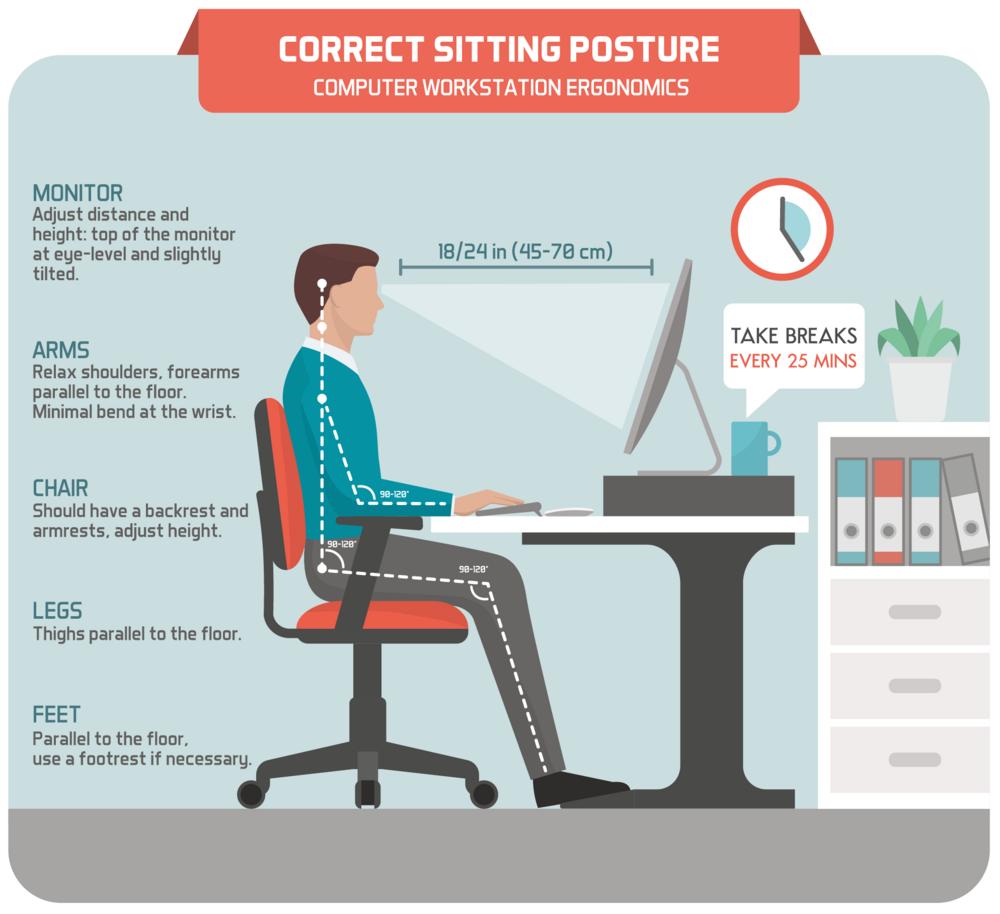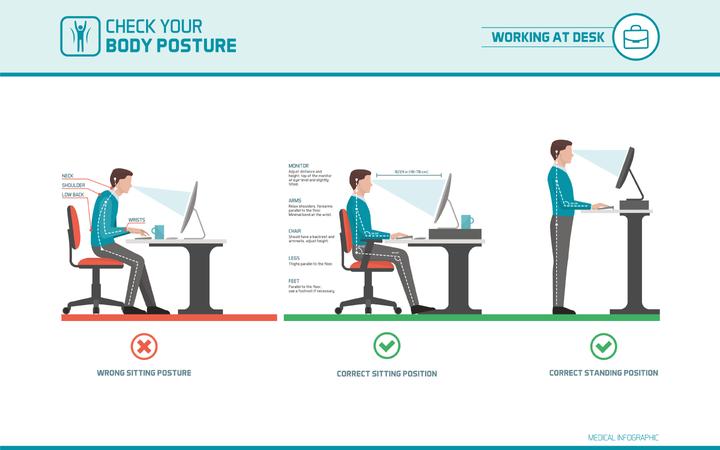
By cuterose
Tips for an Ergonomic Workstation
Many of us spend hours at our workstations every day, and with many of us working from home because of COVID-19, the ergonomic issues have come home with us. Bad habits and incorrect posture can lead to neck and back pain or sore wrists and fingers. Proper ergonomics can help you and your employees stay comfortable at work (wherever that may be) and avoid injury and illness.
Ergonomics is a scientific discipline, which is concerned with improving the productivity, health, safety, and comfort of people. It’s basically fitting the job to the person rather than fitting the person to the job. For example, some people would be more comfortable with slight adjustments, such as tilting the keyboard a bit or adjusting the chair or monitor. The problem is that many workers don’t understand workstation ergonomics, and so they do not realize the hazards associated with sitting at a desk for hours every day.
It is important that you adjust your workstation furniture and equipment to suit your individual needs. Here are some tips on how to set up your workstation.

Chair
A good chair provides necessary support to the back, legs, buttocks, and arms, while reducing exposures to awkward postures, contact stress, and forceful exertions.
Monitor
Choosing a suitable monitor and placing it in an appropriate position helps reduce exposure to forceful exertions, awkward postures, and overhead glare. This helps prevent possible health effects such as excessive fatigue, eyestrain, and neck and back pain.
Keyboard and Mouse
Proper selection and arrangement of the computer keyboard and mouse help reduce exposure to awkward postures, repetition, and contact stress.
Telephone
While many of us (especially those working from home) are using cell phones for most calls, traditional, corded phones are still the norm in many offices. However, telephones with cords can cause the user to assume awkward postures. Placing the telephone too far away can cause you to repeatedly reach, resulting in strain on the shoulder, arm, and neck. And prolonged conversations with the phone pinched between your shoulder and head may cause stress and neck pain (cradling a small cell phone on your shoulder can exacerbate this).
Take a Break
Once you have correctly set up your workstation or home office, use good work habits. No matter how perfect the environment, prolonged, static postures will inhibit blood circulation and take a toll on your body.









